Europe, British Isles, East England, Cambridgeshire, Buckden, Bishop of Lincoln's Palace [Map]
Bishop of Lincoln's Palace, Buckden is in Buckden.
Around 1250 the first Bishop of Lincoln's Palace, Buckden [Map] was built being half-way between London and Lincoln, Lincolnshire [Map] on the Great North Road.
In 1472 Archbishop Thomas Rotherham (age 48) commissioned the building of a new Bishop of Lincoln's Palace, Buckden [Map] based on Tattershall Castle [Map].
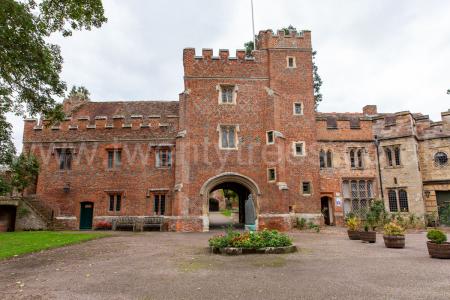
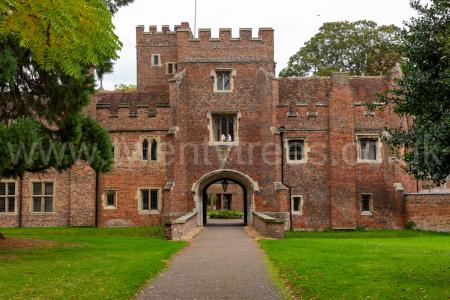
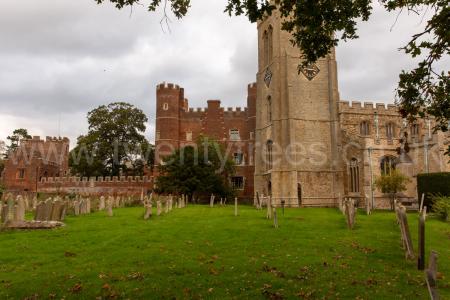
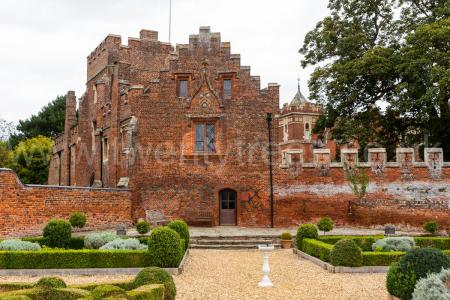
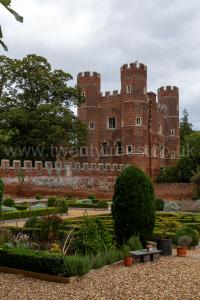
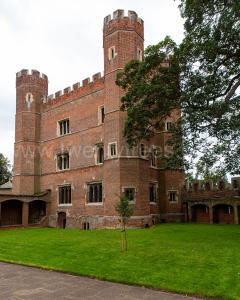
On 02 Jan 1514 Bishop William Smyth (age 54) died at the Bishop of Lincoln's Palace, Buckden [Map]. He was buried at Lincoln Cathedral [Map].
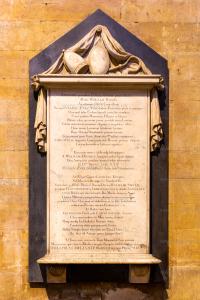
Letters and Papers 1528. 26 Jun 1528. R. O. Ellis, 3 Ser. I. 251. 4418. John Bishop Of Lincoln (age 55) To Wolsey.
Was at Court on Trinity Sunday (7 June), Corpus Christi Eve, and Corpus Christi Day (11 June), according to your advertisement. On the eve the King was shriven, and the next day shriven and houselled. "I ministered, as my weakness would serve, in pontificalibus," and found the King very gracious. Whilst I was at London, many were dying of the sweat. I tarried till it came to my house, and was then forced to flee, and therefore did not presume to come into your presence. Reached Woburn in a litter; sometimes on horseback. Several are dead there. As the sweat is in my house I dare not tarry, and therefore I wish leave to go to Buckeden [Map]. I have promised a pilgrimage to Our Lady of Walsyngham. I have two Lutherans in my house, one of whom wrote the letter I sent you. He is a very heretic, and has done hurt in my diocese. I purpose to abjure them both, and after they have done open penance to commit them to two monasteries. I beg you to remember and punish the infect persons in Oxford; for if sharpness be not used, many will do ill. There are more in Oxford, as appears by libels set up at night on the church doors. I gave one of them to my lord of London. As they are in my diocese, I intend to ride to Oxford myself, about Michaelmas, with your leave, and reduce them to order. Woburn, 26 June.
Hol., pp. 2. Add. Endd.
In 1533 Catherine of Aragon Queen Consort England (age 47) was imprisoned at Bishop of Lincoln's Palace, Buckden [Map].
On 14 Jul 1551 the two Brandon brothers died of sweating sickness at the Bishop of Lincoln's Palace, Buckden [Map]. They were buried at St Mary's Church, Buckden [Map].
Henry Brandon 2nd Duke of Suffolk (age 15) died of sweating sickness . His brother Charles Brandon 3rd Duke of Suffolk (age 14) succeeded 3rd Duke Suffolk.
Charles Brandon 3rd Duke of Suffolk (age 14) died of sweating sickness an hour or so after his brother. Duke Suffolk extinct.
Charles Brandon 3rd Duke of Suffolk: In 1537 he was born to Charles Brandon 1st Duke of Suffolk and Catherine Willoughby Duchess Suffolk. Henry Machyn's Diary. 22 Sep 1551. The xxij day of September was the monyth ['s mind of the] ij dukkes of Suffoke [Note. Henry Brandon 2nd Duke of Suffolk and Charles Brandon 3rd Duke of Suffolk] in Chambryge-shyre, with [ij] standards, ij baners grett of armes and large, and banars rolles of dyver armes, with ij elmets, ij [swords, ij] targetts crownyd, ij cotes of armes, ij crests, and [ten dozen] of schochyons crounyd; and yt was grett pete of [their] dethe, and yt had plesyd God, of so nobull a stok they wher, for ther ys no more left of them.
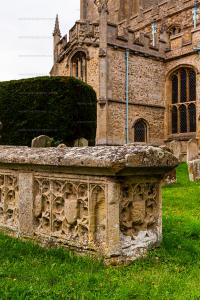
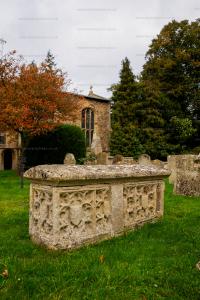
Henry Machyn's Diary. 16 Jul 1551. The xvj day of July ded of the swet the ij yonge dukes of Suffoke [Note. Henry Brandon 2nd Duke of Suffolk (deceased) and Charles Brandon 3rd Duke of Suffolk (deceased)] of the swet, boyth in one bed in Chambryge-shyre [Map]; and [buried] at (blank in MS.); and ther ded from the viij day of July unto the xix ded of the swett in London of all dyssesus, viijc. iijxx. and xij. and no more in alle, and so the chanseller is serteffyd.
Note. Death of the two young dukes of Suffolk. Henry and Charles Brandon, the only sons of Charles Brandon, duke of Suffolk. Their mother was his second wife, Katharine (age 32), daughter and sole heir of William lord Willoughby de Eresby. (See some excellent letters of hers in Miss Wood's collection, vol. iii.) The report which reached our diarist is incorrect in two respects: the noble youths did not die "in one bed" nor "in Cambridgeshire." Their deaths took place at the bishop of Lincoln's palace [Map] at Bugden, in the county of Huntingdon. A narrative, entitled "Epistola de vita et obitu duorum fratrum Suffolciensium, Henrici et Caroli Brandon," written by sir Thomas Wilson, was shortly after printed. Two interesting extracts from this rare volume will be found in the Gentleman's Magazine for Sept. 1825, vol. xcv. ii. 206. The young men, accompanied by their mother, had just arrived at Bugden, when the duke was suddenly taken ill of the fatal sweat, which in five hours deprived him of life. The younger brother Charles, though placed in a distant chamber, immediately learned what had happened, and being asked by the physician upon what he was meditating, replied, "I am thinking how hard it is to be deprived of one's dearest friend." "Why do you say so?" said he. He answered, "How can you ask me? My brother is dead. However, it is of little matter, I shall soon follow him." And so he did, in half an hour. Sir Thomas Wilson admits the title of duke to the younger brother immediately on the elder's demise, and so we find from our Diary "the ij. dukes" were so called in London. The other extract given in the Gentleman's Magazine is a very high character (in Latin) of the young duke Henry, written by Dr. Walter Haddon, regius professor of civil law in the university of Cambridge: of this Strype (Memorials, Book ii. c. 4,) has given the substance in a translated form. Sir Thomas Wilson, in his Arte of Rhetorique, has also an interesting passage describing the characters of these young noblemen; and some Latin verses on their death, "Carmina in Mortem," &c. were written by Michael Reniger, and printed in 1552, 4to. The circumstance that their mother the duchess was the great patroness of the reforming divines accounts for the extraordinary interest excited by their death. An engraving in Chamberlain's Holbein Heads is taken from two miniatures, supposed to represent these brothers: but if the dates given in the inscriptions are compared, they will be found both to belong to the elder boy.
Note. Mortality from the sweating sickness. Two other reports of this have come down to us, and, though the figures do not exactly correspond, yet they seem all to have been derived from official returns, and there is also some difference in the periods of time. "Letters from London reporte there died in London of the sweatynge sicknes from the 7. of July till the 20. of the same 938 persons, but howe many have died since to this daye, beinge the 23., I knowe not. I truste it is nowe cleane gone." (MS. Harl. 353, f. 107.) Shortly after the disease had terminated, the celebrated Dr. Caius wrote a treatise upon it, which was printed in the following year, under the title of "A boke or counseill against the disease commonly called the sweate, or sweatyng sicknesse. Made by John Caius, doctour in physicke. 1552." Printed by Richard Grafton in black letter, 40 leaves, 12mo. The Dedication to the earl of Pembroke is dated 1st April, 1552. (Caius also wrote a Latin treatise on the same subject, of which a late edition, entitled "Johannis Caii de Ephemera Britannica liber unus," was printed in London, 8vo. 1721.) From this curious volume we learn that the disease first appeared with the army of Henry the Seventh, which arrived at Milford, out of France, the 7 Aug. 1485; next in 1506; again in 1517; a fourth time in 1528; and a fifth in 1551, shortly before the composition of his treatise. On this occasion, "Beginning at Shrewesbury in the middest of April, proceadinge with greate mortalitie to Ludlowe, Prestene, and other places in Wales, then to Westchestre, Coventre, Oxenfoorde, and other tounes in the Southe, and suche as were in and aboute the way to London, whether it came notablie the seventh of July, and there continuing sore, with the loss of vijC.lxi. from the ix. day until the xvi. daye, besides those that died in the vii. and viii. dayes, of whom no registre was kept, from that it abated until the xxx. day of the same, with the loss of C.xlii. more. Then ceasing there, it wente from thence throughe al the east partes of England into the northe, untill the ende of Auguste, at which tyme it diminished, and in the ende of Septembre fully ceassed." The following singular passage relating to this disease occurs in a report of the preaching of Thomas Hancocke, minister of Poole in Dorsetshire. "—in his doctrine he taught them that God had plagued this Realme most justly for their sins with three notable plagues. The first plague was a warning to England, which was the Posting Sweat, that posted from town to town thorow England, and was named Stop-Gallant: for it spared none. For there were some dauncing in the Court at nine a'clock that were dead at eleven. In the same sweat also at Cambridge dyed two worthy imps, the duke of Suffolk his sons, Charles and his brother." (Strype, Memor. iii. chap. vii.) The singular name here noticed occurs also in the register of Uffculme, Devonshire, where the disease prevailed in the month following its devastation in London. "Out of 38 burials entered in that year, 27 were in the first 11 days of August, and 16 of them in three days. The disease of which these persons died is called, in the parish-register, the hote sickness or stup-gallant." Magna Britannia, by Lysons, who adds that he had not been able to find the term elsewhere.
In 1837, Huntingdonshire was transferred to the Diocese of Ely and the Bishop of Lincoln's official residence was changed from Bishop of Lincoln's Palace, Buckden [Map] to Riseholme Hall, Lincolnshire, the newly established episcopal palace at Riseholme in Lincolnshire.